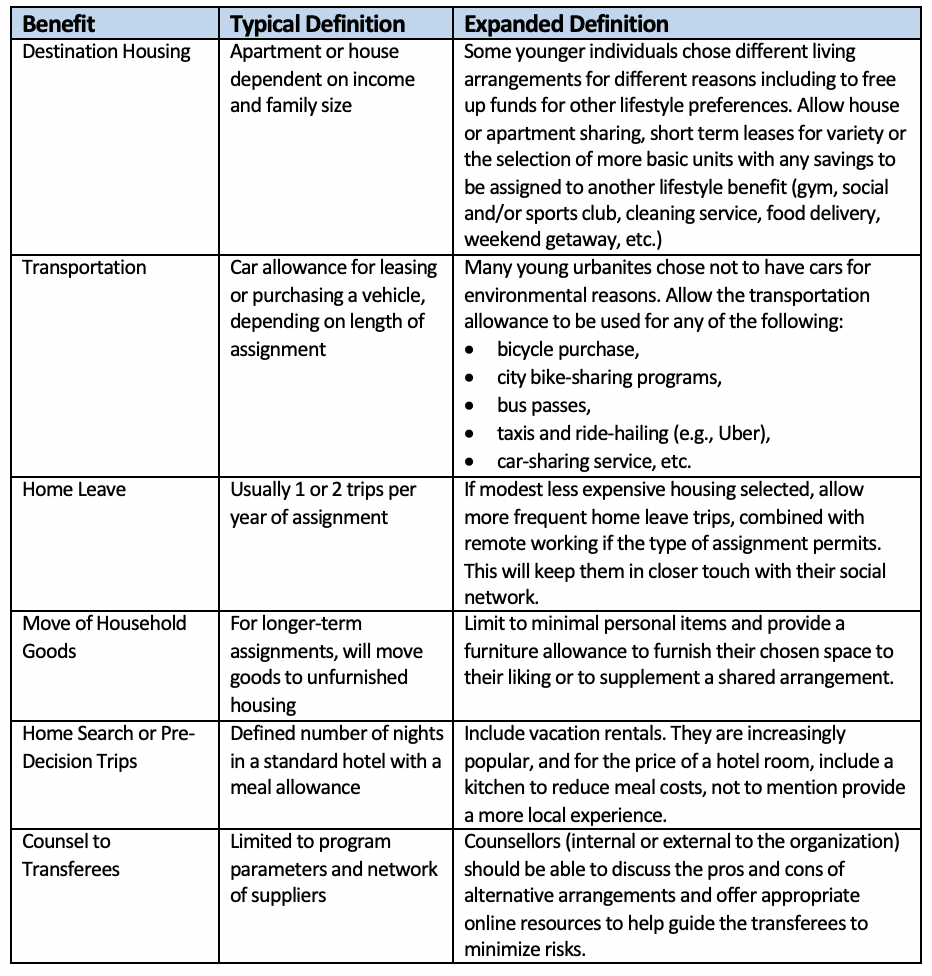-
Mobility: And you thought Millennials were a handful!! (no offence intended if you are one 😉)
24-03-2021

Relocation benefit provisions have historically been designed based on the traditional family with a couple of children, a house and one or two cars. Millennials, or Generation Y, have brought some disruption to this template, as evidenced by the increased prevalence of core/flex and lump sum plans. This cohort is now well into adulthood, with the oldest members close to 40. Despite their late start in life and work, Millennials are likely to be heading into more settled and predictable lifestyles, but not necessarily the way their parents did. Right on their heels is Generation Z (born 1996 and later) whose oldest members are now entering the workforce.
To be sure, the views of Generation Z are not fully formed and could change quite a bit as they grow older, and their environment is affected by domestic and global events, one of which will certainly be the COVID-19 pandemic. What we do know about this group is that it can be characterized as “Millennials Plus” in terms of diversity, level of education, family makeup, and digital reliance. These two generations combined will make up a significant portion of the workforce within no time. Flexibility is and will continue to represent the most effective means of accommodating the younger generations, as well as the diverse needs of employees within each generational cohort.
The pandemic has spurred a renewed emphasis on “duty of care,” which, in terms of mobility, is ensuring that a program delivers the appropriate level of safety, security and well-being for its transferees and accompanying family members. This could mean adding or improving certain provisions or recalibrating the basis on which they are offered. While there may seem to be a push to tightening of policy design, it does not have to mean less flexibility. It just means reviewing the program in terms of the new realities we are facing. For the time being, safe travel, quick access to resources when needed and a secure environment are priority. But when the pandemic fog lifts, and the pace of relocations increases, there are easy ways to enhance flexibility in your program to appeal to the younger assignees.
Whether it’s a traditional, a core/flex or a lump sum benefit program, eligible expenses while on assignment are more often than not subject to a pre-set definition. If it is determined that the benefit is more than likely to be paid, why not add elasticity to the definitions. The following table provides a few examples to consider:

Thinking outside the box is what is needed to deal with the rapidly evolving workforce. We believe that our deep knowledge and extensive experience could help you stay ahead of the game from a global mobility perspective. Granted, some changes may come with added risks for the organization, but as long as they are understood, they can be managed. Keep in mind that in 15 years, it’ll be Generation Alpha wanting a benefit Millennials would never have thought to demand!
If you are interested in hearing more, please give us a call.